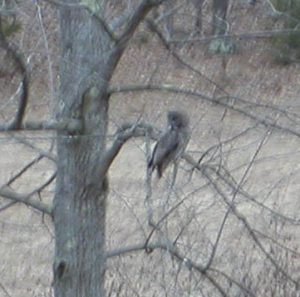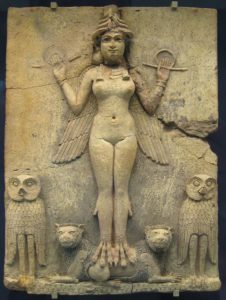
The big excitement this week has been the appearance of a Great Gray Owl, a boreal owl rarely seen in the United States. As the name implies, this is a very large owl, bigger even than the Great Horned. The wingspan is huge, but a blur in my camera even flying slowly.
No one knows if this is a female or male, though one birder thought this owl is female based on the size (female owls tend to be slightly larger, but the difference is not great enough for identification). The owl was unconcerned about the group of people nearby and concentrated on hunting rodents. As word has spread, people have been flocking here from out-of-state.
What does it all mean? On one level, that food for this bird in the far north has been scarce this winter. Possibly we have had a greater mouse or vole irruption, though I haven’t noticed it. Gray Owls have also been spotted in the past few weeks in Maine and New Hampshire.

This was not a personal sign since I was told where the bird was feeding in the late afternoon and went looking for it, but it is a sign for the nearby community as whole, which has talked of little else this week. I ordinarily don’t place credence on superstitions about seeing owls in daylight and don’t know anyone who does, partly because we see so many owls during the day around here.
The owl is the sacred bird of Ishtar, probably because the owl protects the grain by hunting rodents. The owl was also a women’s symbol in Mesopotamia. Women wore owl amulets during childbirth and the prostitutes’ union used the owl as their totem. I interpret this owl as an intervention from outside to rid the community of the vermin of noxious ideas.
In the next day or two as weather becomes warmer, the owl is expected to move north.

